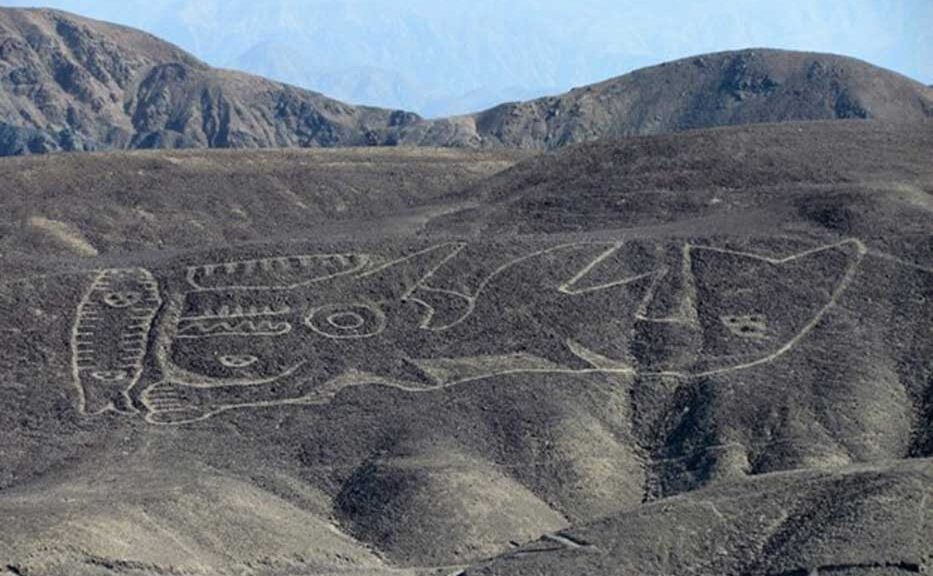Gigantic 2,000-Year-Old Geoglyph of an Orca Is One of the Earliest in Peru
A giant geoglyph of the killer whale, carved to a desert hillside in the remote Palpa region of southern Peru after being lost to science for over 50 years, has now been rediscovered by archeologists.

According to the researchers, the 230-foot-long (70 meters) orca figure – considered a powerful, semimythical creature in ancient Peruvian lore — may be more than 2,000 years old, according to the researchers.
It is said to be one of the oldest geoglyphs in the Palpa region, older than those in the Nazca region known for its vast collection of ancient ground markings– the Nazca lines – which include animal figures, straight lines, and geometric shapes.
Archaeologist Johny Isla, the head of Peru’s Ministry of Culture in Ica province, which includes the Palpa and Nazca valleys, explained that he saw a single photograph of the orca pattern for the first time about four years ago. He’d seen it while researching studies of geoglyphs at the German Archaeological Institute in Bonn.
The photograph appeared in an archaeological catalog of geoglyphs printed in the 1970s, which was based on research carried out in Palpa and Nazca by German archaeologists in the 1960s, Isla said.
But the location and size of the orca geoglyph were not well-described in the catalog, Isla told Ancient Origins in an email.
As a result, he said, the glyph’s whereabouts in the desert hills of the Palpa Valley, about 250 miles (400 kilometers) south of Lima, were by then unknown to local people or to scientists.
After returning to Peru, Isla looked for the orca geoglyph on Google Earth and then on foot. “It was not easy to find it, because the [location and description] data were not correct, and I almost lost hope,” he said. “However, I expanded the search area and finally found it a few months later,”
Orca art
After documenting the rediscovery, Isla led a team of six specialists from Peru’s Ministry of Culture in an effort to clean and restore the orca geoglyph in March and April this year.
Before the restoration, the geoglyph was disappearing due to erosion and the passage of time. “Being drawn on a slope, it is easier [for it] to suffer damage than [for] those figures that are in flat areas, such as those of the Nazca Pampa,” he said.

The creators of the orca drew it on the hillside in negative relief by removing a thin layer of stones to form the outline of the figure. This is similar to the technique used by the people of the Nazca culture to create geoglyphs from about 100 B.C. to A.D. 800.
But some contrasting parts of the rediscovered pattern, such as the eyes, were created out of piles of stones, the researchers said. This technique was used by people of the older Paracas culture, who occupied the region from around 800 B.C. to 200 B.C.
Soil tests have indicated that the orca geoglyph dates from around 200 B.C. The style of the pattern and its location on a hillside, rather than on a plain, suggest that it may be one of the oldest geoglyphs in the region, said one of Isla’s colleagues, Markus Reindel of the German Archaeological Institute, in an interview in a German newspaper.
Isla said that before the restoration earlier this year, it would have been hard for a layperson to see the orca. “With the eyes of an archaeologist, and after having seen the photo in the catalog and later in Google Earth, it was not very difficult,” he said. “However, [for] the eyes of a person without these advantages, it was a bit difficult.”
